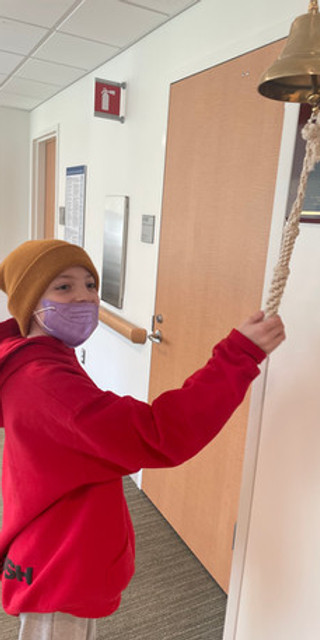
Fight like Parker
Parker was described by a nurse as, "cute as a button, but tough as nails." Throughout her battle with cancer and during the extremely taxing aspects of her treatment, Parker remained positive, resilient and focused on a cure.
The Little p Project endeavors to embody's Parker's beautiful spirit as it works to advance research and viable treatment options for cancers similar to Parker's while assisting families in need.
Funds raised by the Little p Project are used to further pediatric sarcoma research, assist in facilitating studies & trials, improve access & information, and help families currently fighting this disease.
Click to learn more about Little p Project's research grants and studies funded.

Why We Need Your Help
-
Cancer is the leading cause of death by disease in children.
-
Every 3 minutes, a child is diagnosed with cancer. Annually in the U.S., approximately 15,000 children are told they have cancer, meaning 1.5 million family members, friends, and classmates are directly impacted by pediatric cancer.
-
Despite these facts, childhood cancer research is underfunded. The National Cancer Institute (NCI) only spends an average of 4% of its research funding on all pediatric cancers combined.
-
Over 200 cancer drugs have been developed and approved for adults. Specific to children, only 6 drugs have been approved for pediatric cancer.
-
Treatment protocols and therapies for pediatric sarcomas have not advanced in the past 30 years and remain centered around surgery, chemotherapy and radiation (commonly referred to as Cut, Poison, Burn. The options are limited and the response rate and survival for patients remains low. New protocols and therapies are desperately needed to improve the outcome for these pediatric cancer patients.
-
For many adult cancers, you have alternatives, and therefore time. For kids with unresponsive or relapsed soft tissue sarcoma, the alternatives are limited or non-existent.
-
The more research that is funded, the closer we are to find new innovative protocols & therapies that can save the lives of our pediatric sarcoma patients.
About Sarcoma
-
Sarcoma is a broad term for malignant aggressive cancers that arise from bone and connective tissue (fat, muscle, blood vessels, nerves and tissue that surrounds bone and joints).
-
There are over a hundred difference types of sarcomas, and the tumors can arise anywhere in the body.
-
Sarcomas account for 12% of all childhood cancers (ages 0 to 14years) or 26% of childhood and adolescent cancers (0 to 19 years).
-
Despite the vast heterogeneity of diseases, most sarcomas are grouped into broad categories and treated with therapies not directed at the specific diseases.
-
Of all the pediatric cancers, sarcoma is considered one of the deadliest rare cancers, and soft tissue sarcomas are often associated with the poorest prognosis.
-
The cure rate for childhood cancers overall is 85%, but for sarcomas, and sarcomas similar to Parker's it is meaningfully lower.
-
With few exceptions, the therapies to treat sarcomas have not changed in decades.
-
Even when successful, the therapies to treat sarcomas are extremely toxic, and lead to lifelong morbidity. The three categories of therapy still used today are referred to by cancer doctors as cut (surgery), burn (radiation), and poison (chemotherapy).
